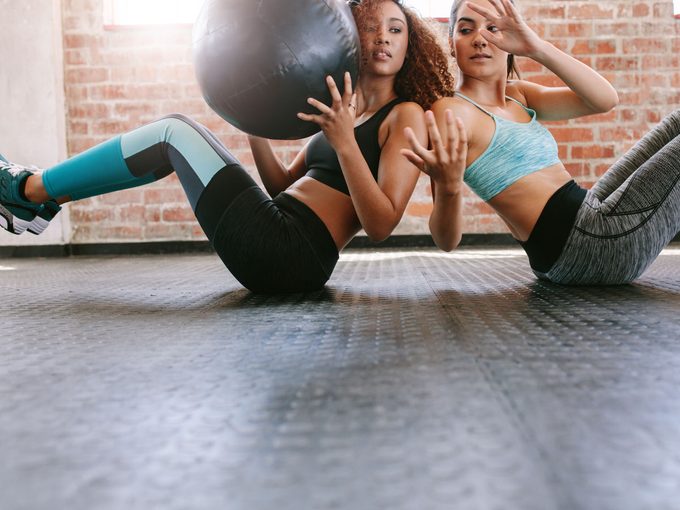How You Should Be Exercising In Your 30s
An industry expert shares some suggestions.

Canadians are living longer: Statistics Canada cites that Canadians lived an average of 81.7 years in 2011 – an increase of 24.6 years since 1921 (79 years for men and 83 for women). The good news is, these statistics continue to rise.
We have medical advances, pharmaceutical research and access to public health care to thank for these extra years, but another secret weapon we can add to our “living longer” arsenal is an often overlooked one: exercise. Research shows that regular physical activity can reduce inflammation in the body that comes with aging, which can also help decrease our risk of developing related diseases and conditions, such as heart disease, obesity, diabetes and loss of muscle mass.
This is promising news for all of us, but there is a catch: How we work out should vary decade by decade, and to really take advantage of being healthy and staying active longer requires that we pay attention to different key exercise methods at each life stage. Here, an industry expert shares suggestions on how to exercise in your 30s.
It’s time to get to know your body better
Most women enjoy their highest basal metabolic rate (the number of calories the body burns at rest) in their early 20s. Once we reach our 30s, though, our supercharged metabolisms begin to take a bit of a hiatus: We start to lose lean muscle mass and increase body fat – about one to two percent each decade. Shedding pounds gets harder, as does our ability to keep fit. But before you hit that consolation tub of Häagen-Dazs, know that it’s not all doom and gloom. “Your 30s can be a great time to really get to know your body,” says Geoff Wintonyk, a senior instructor at Fit Factory Fitness in Toronto. “Yes, your body goes through changes, but some of them are actually good: Your bones are at their strongest point in your early 30s, so ensuring and maintaining good bone health will be beneficial as you go into the next decade.”
The proper way to exercise in your 30s
Wintonyk likes to use weight-bearing and strength-training exercises to maintain bone mass because, like muscles, bones get bigger and stronger with use when they’re made to bear weight. “Also, the more muscle you have, the faster your metabolism will be,” he says. Learn more on how a single workout can help boost your metabolism.
So, what does this look like in a practical sense? This decade is a pretty hectic one: Careers are in full swing, families are being made and homes are being bought. How realistic, then, is a new workout routine on top of everything else? “Listen, in an ideal world, I’d love to see people incorporate exercise daily,” he says. “But if that’s not doable, it’s important to focus on balancing the workouts you do so that you’re hitting different body parts in each one. Circuit training, which is a series of resistance and cardio exercises done back to back, is also a great one, as well as high-intensity interval training [HIIT] workouts, which are designed to be shorter and more intense so that you can really capitalize on the time you spend at the gym.” Edging closer to your 40s? These are the exercises you should be doing.




